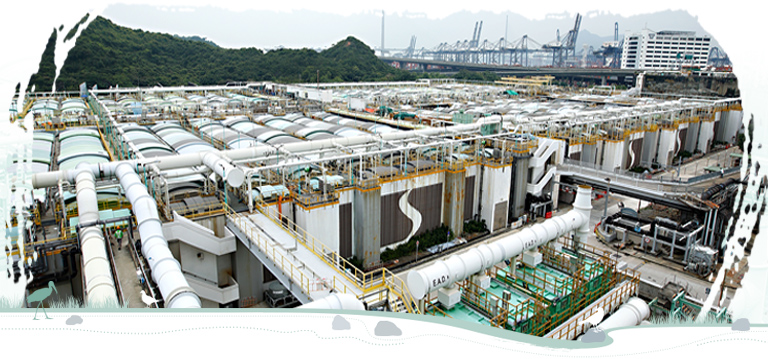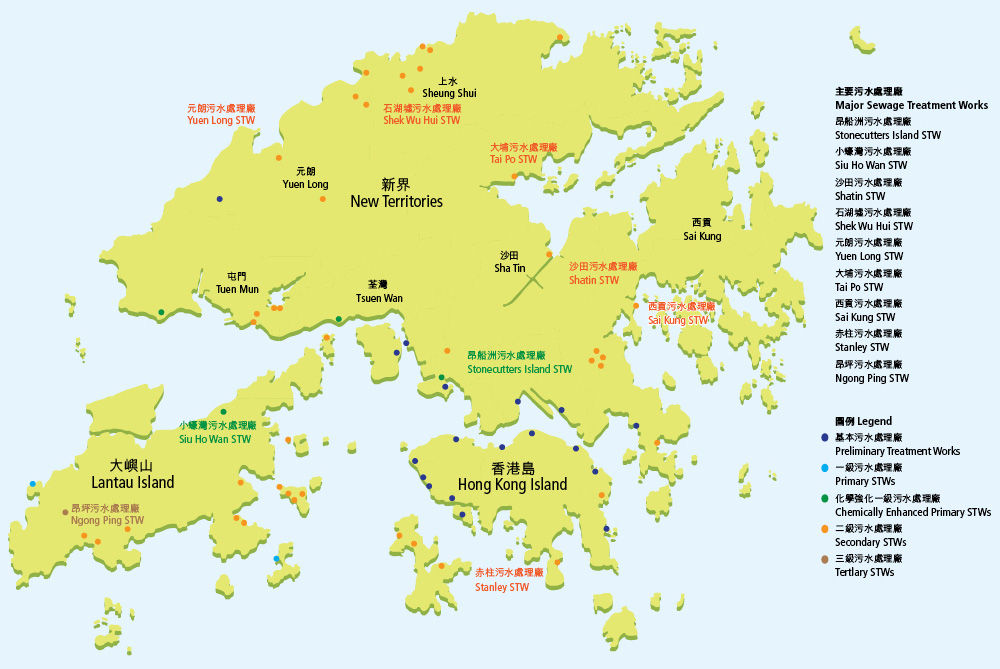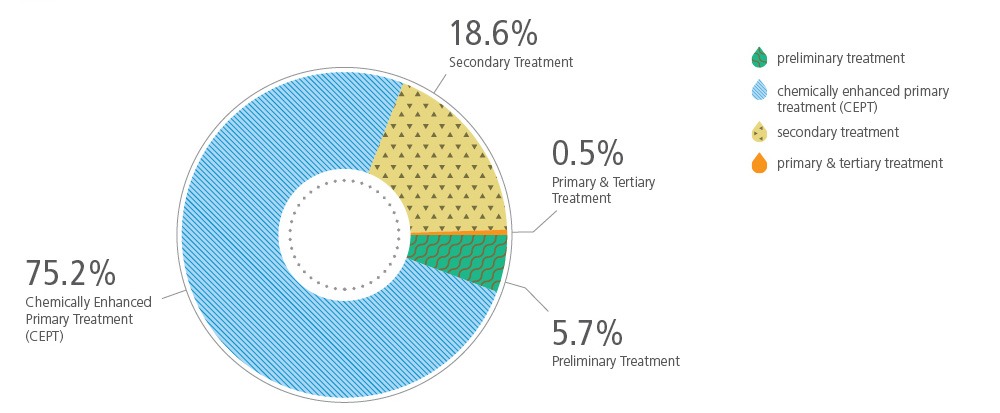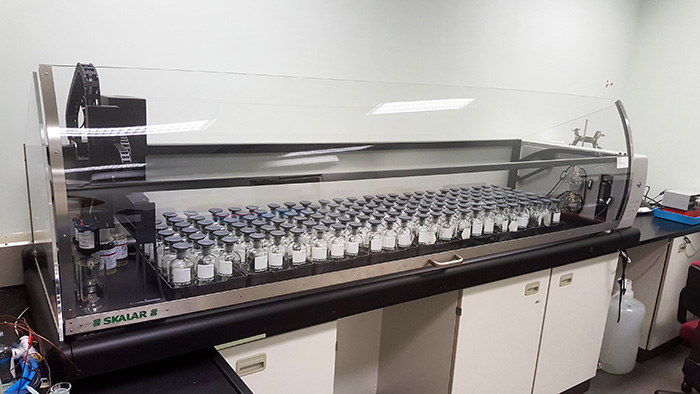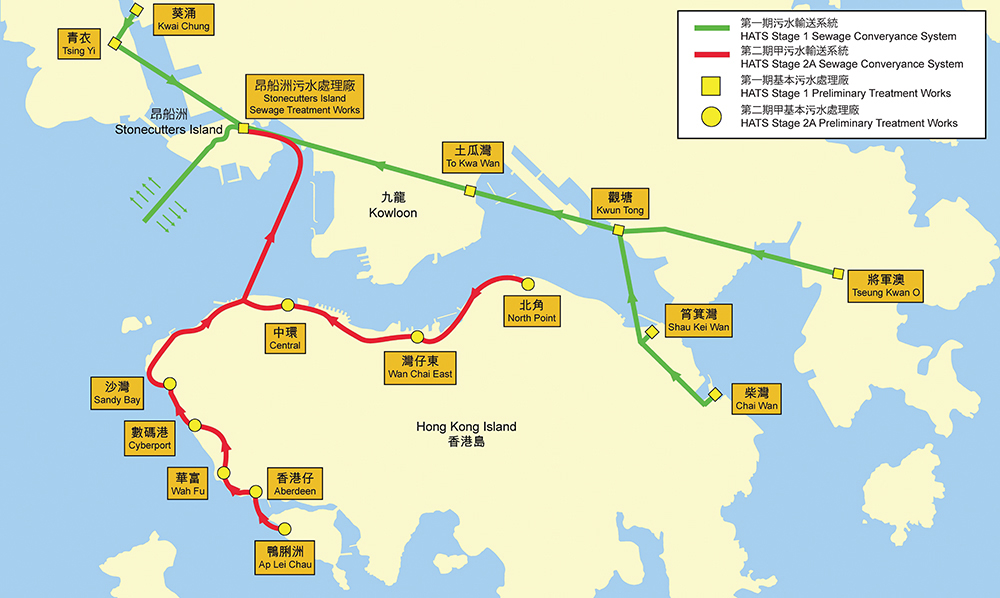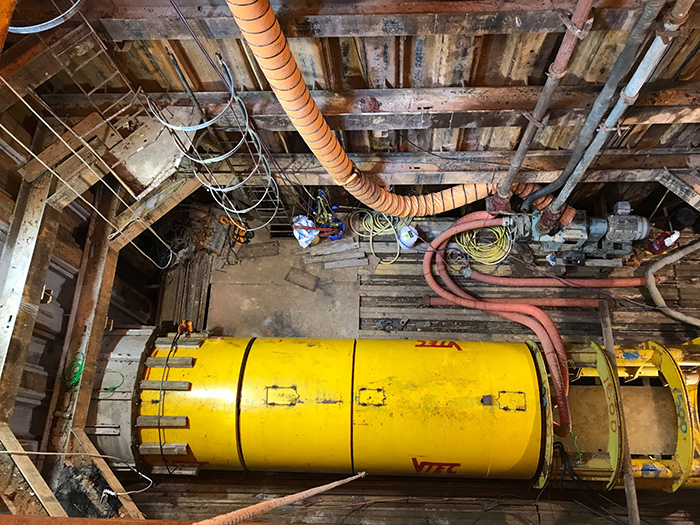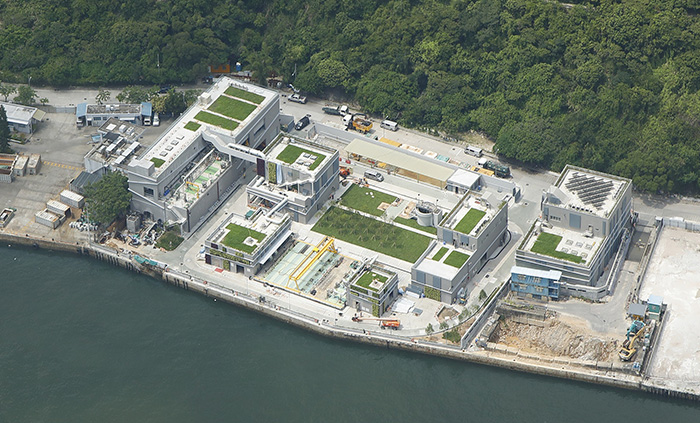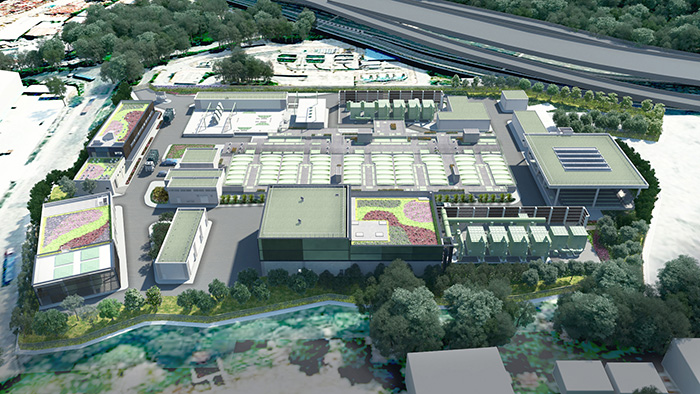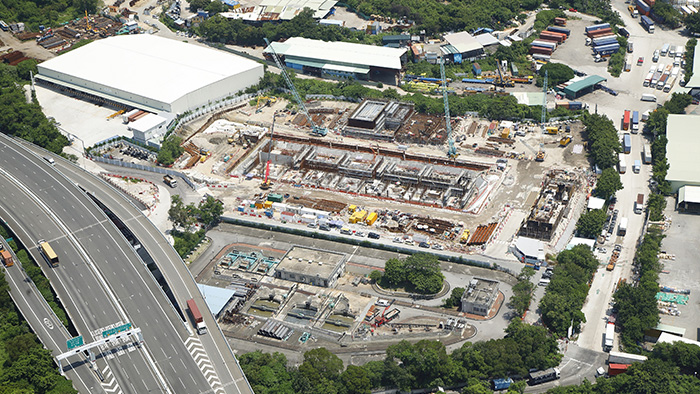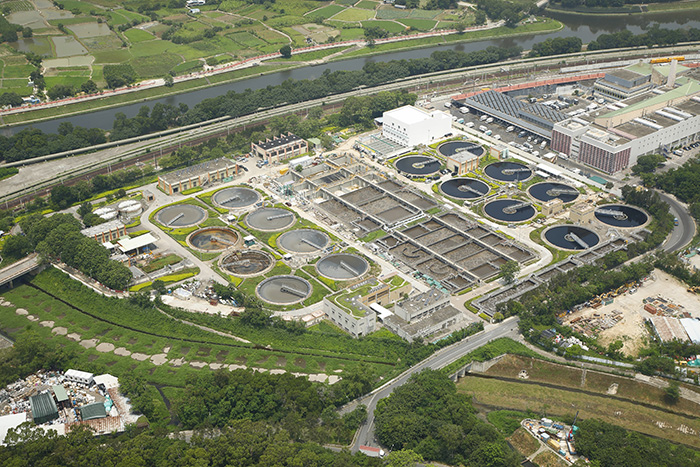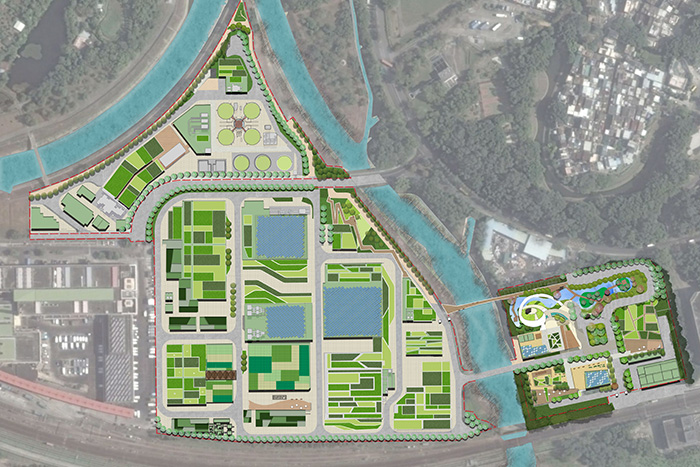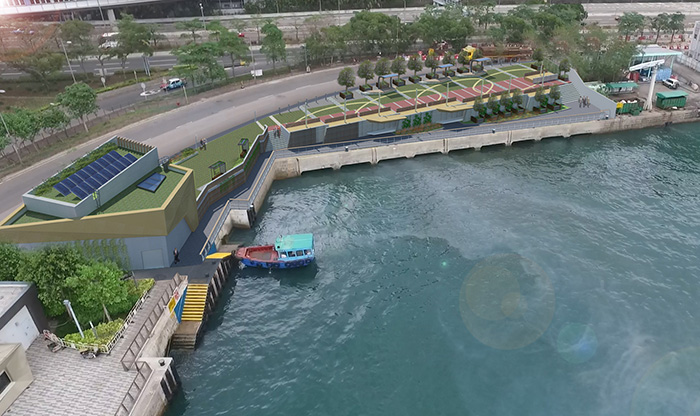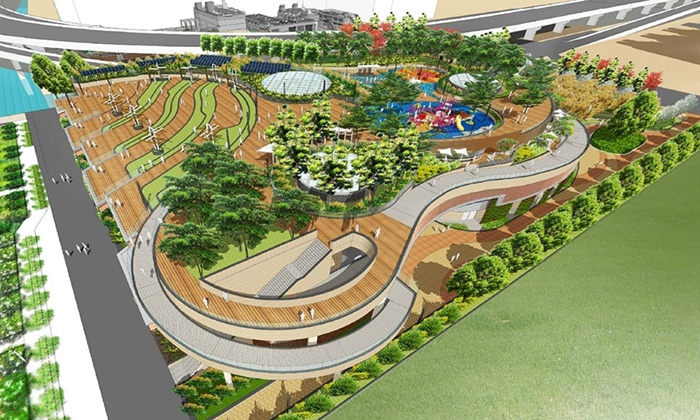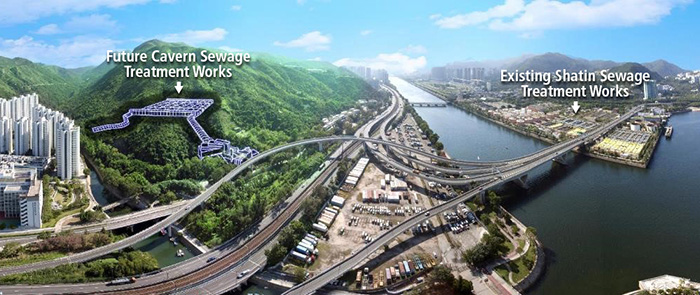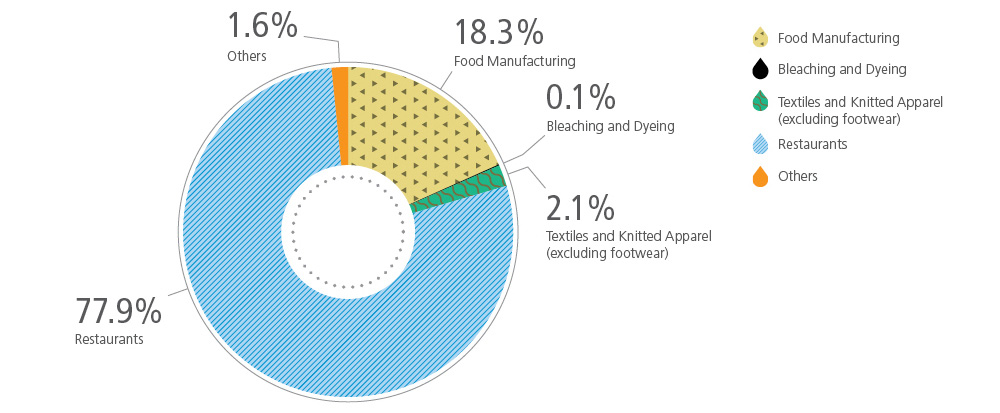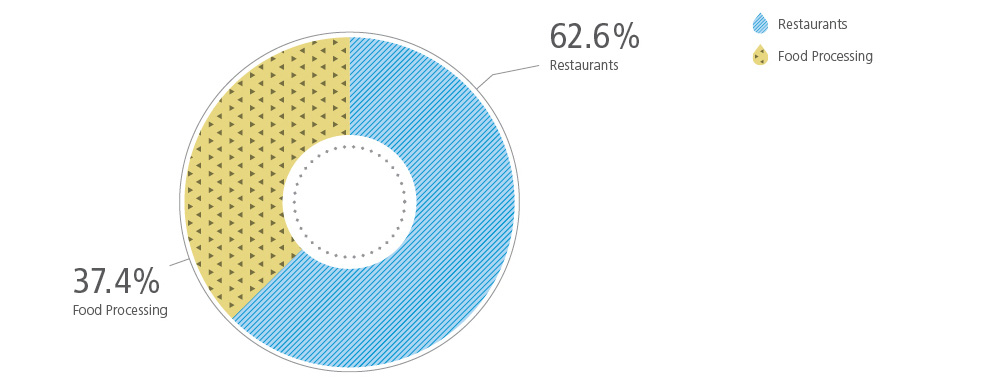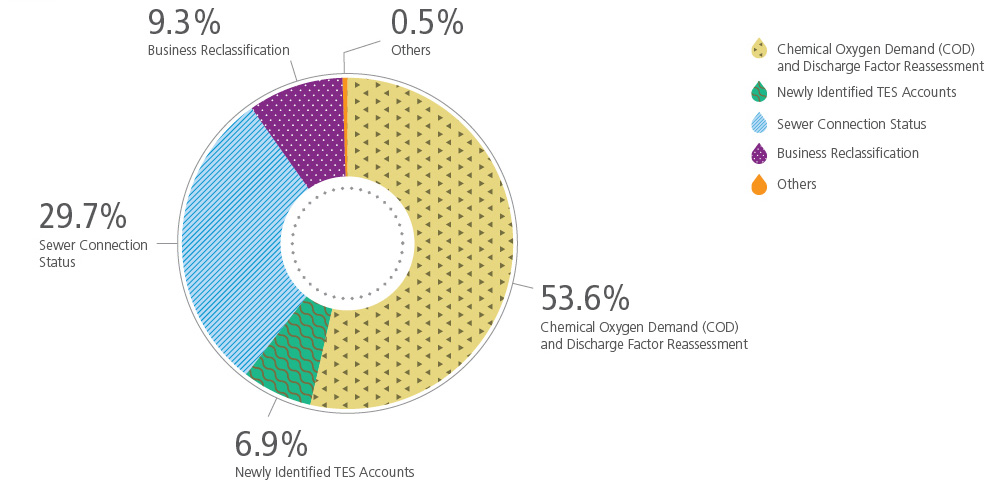Our Core Responsibilities
Overview of Sewage Treatment and Sewerage System in 2017-18
Apart from stormwater drainage, one of the core services of the Department is to collect, treat and discharge daily sewage generated in Hong Kong. DSD is committed to providing world-class sewage treatment services through adopting various sewage treatment processes and advanced technologies to significantly reduce the discharge of pollutants. We also carry out regular repair and maintenance works to ensure the effective operation of our sewerage, treatment and disposal facilities. Looking ahead, we will continue to expand the coverage of the sewerage system and to improve the sewage treatment facilities to protect the water quality within Hong Kong waters and promote the sustainable development of Hong Kong.
- Treatment of about 2.8 million cubic metres of sewage on average every day and 1,007 million cubic metres of sewage in total in the year
- Total length of sewerage network about 1,770 kilometres
- Public sewerage network serves around 93.5% of Hong Kong's population1.
- About 380,000 tonnes of sludge collected and treated in the year
- A total of 314 DSD owned sewage treatment facilities
In 2017-18, a total of about 1,007 million cubic metres of sewage was treated. Also, about 380,000 tonnes of sludge produced in the sewage treatment process were collected and treated. The sewage treatment classification was as follows:
| 1 | based on the no. of domestic water bill accounts with sewage charges levied |
|---|
Sewage treatment classification
Professional Laboratory Services
Professional laboratory services are imperative in ensuring that treated sewage meets the statutory requirements. DSD operates a number of laboratories to provide various types of laboratory services. Since 1999, our Shatin Central Laboratory and Stonecutters Island Laboratory have been accredited for testing of environmental samples (water & wastewater) under the Hong Kong Laboratory Accreditation Scheme (HOKLAS) operated by the Hong Kong Accreditation Service of the Innovation and Technology Commission. The Stonecutters Island Laboratory has also gained accreditation since 2007 for testing of the main components of chemicals used in sewage treatment. In addition, a new biochemical oxygen demand (BOD) automatic analyser was purchased by the Shatin Central Laboratory in March 2016 to enhance efficiency . HOKLAS accreditation was obtained in July 2017, making the Shatin Central Laboratory the first laboratory in Hong Kong to be accredited for BOD test using this automatic analyser.
The adoption of the Laboratory Information Management System not only automate laboratory work flow, but also facilitates the consolidation of laboratory results and operation data to assist us in monitoring effluent quality and to enable more effective decision making and control of the sewage treatment process.
To improve precision of instruments and monitor water quality and efficiency of the sewage treatment process, we carry out sewage samplings and analyses regularly to ensure that treated sewage meets specified discharge requirements. During the year, 32 of our laboratory tests were accredited and over 261,623 analyses in total were conducted. The analytical results of effluent quality of major sewage treatment works can be found on our website.
Planning, Design and Construction of New Sewerage Facilities
Harbour Area Treatment Scheme (HATS)
The Harbour Area Treatment Scheme (HATS) is one of the most important governmental infrastructure projects in Hong Kong aiming to improve the water quality of Victoria Harbour by collecting and treating sewage from both sides of the harbour. The project was carried out in two phases, with construction works spanning two decades at a total cost of $25.8 billion. The facilities of HATS Stage 1 and Stage 2A were fully commissioned in December 2001 and December 2015 respectively.

Current Progress
To improve the operational flexibility and stability of the entire HATS system, the project team spent months on preparation and planning for replacement of the two large penstocks. In March 2018, the first stage of replacement of two large penstocks was carried out which involved a detailed survey and partial dismantling of the two existing penstocks located at 34 metres below ground level inside the Main Pumping Station No.1 of the Stonecutters Island Sewage Treatment Works.

Construction of Additional Sewage Rising Main and Rehabilitation of the Existing Sewage Rising Main between Tung Chung and Siu Ho Wan
The existing sewage rising main between Tung Chung and Siu Ho Wan is the only pipe for conveying sewage collected within the areas to the Siu Ho Wan Sewage Treatment Works. It has been in operation for 20 years, approaching its design life of 25 years. It is imperative to provide an additional sewage rising main so as to examine and maintain the existing one in order to meet the demand of the development of Hong Kong International Airport and Tung Chung New Town Extension as well as enhancing the reliability of the sewerage system. The major scope of the works includes the construction of sewage rising main of about 6.5 kilometres with a diameter of 1,200 millimetres and associated connection and ancillary works. The proposed sewage rising main can cope with an additional 60,000 cubic metres of sewage flow per day.
Upgrading of Mui Wo Sewage Treatment Works (STW)
The existing Mui Wo STW was commissioned in 1985, providing secondary treatment to sewage collected from Mui Wo Chung Hau, Ngan Wan Estate and Mui Wo Ferry Pier areas. To cater for the increase in sewage flow due to the forecast growth in population and proposed extension of the village public sewerage, we engaged a consultant in 2007 to study the feasibility of upgrading the treatment capacity of Mui Wo STW. The study recommended that the treatment capacity of Mui Wo STW should be increased from about 1,190 cubic metres per day to 3,700 cubic metres per day in order to cope with the escalation of future sewage flow. The works also include the improvement of the sludge treatment and deodourisation facilities alongside associated greening works.
Upgrading of San Wai Sewage Treatment Works (Phase 1)
Currently, the San Wai STW mainly provides preliminary sewage treatment with a capacity of 164,100 cubic metres per day. In order to improve the water quality of the north-western waters and cope with the growing population in the area, we expect that the Upgrading of San Wai STW (Phase 1) project will increase the treatment capacity to 200,000 cubic metres per day and that the treatment level will be upgraded to chemically enhanced primary treatment with ultraviolet disinfection.

Current Progress
This project procured through a Design-Build-Operate (DBO) contract commenced in May 2016 for scheduled completion in 2020. Upon completion of construction works, the contractor will undertake the operation and maintenance of the new San Wai STW for a period of 15 years. The estimated project cost is about $3.14 billion.

Tolo Harbour Sewerage of Unsewered Areas
We are carrying out sewerage works in Shatin and Tai Po to improve both the water quality of Tolo Harbour and sanitation for 11 unsewered communities. The project involves building a sewage pumping station at Kau To, Shatin and laying about 12 kilometres of sewers for nine and two unsewered areas in Shatin and Tai Po respectively.

Current Progress
Construction works commenced in 2013 for scheduled completion in November 2018. The estimated project cost is about $364 million.

Shek Wu Hui Effluent Polishing Plant
In line with the rapid development of North District, we will expand the treatment capacity of Shek Wu Hui STW in phases to deal with the issue of ever-increasing sewage. The plant will be upgraded to an effluent polishing plant with tertiary treatment level to ensure that the discharge complies with the stricter environmental requirements, thus protecting the ecological environment of Deep Bay. We will also take this opportunity to revamp its exterior and environmental performance, and promote its educational function in water conservation so as to transform Shek Wu Hui STW into an iconic and multipurpose community facility.

Current Progress
This project is executed in stages. Advance works commenced in mid-2015 for expected completion in 2019. The main works of Shek Wu Hui Effluent Polishing Plant will be implemented in stages. The detailed design is in progress.

Dry Weather Flow Interceptors (DWFI) at Cherry Street, Tai Kok Tsui, Tsuen Wan and West Kowloon
The stormwater drains at Cherry Street, Tai Kok Tsui, Tsuen Wan and West Kowloon are currently affected by polluted dry weather flow, causing water quality and odour problems within West Kowloon waters. To improve the situation, DSD is constructing 9 new DWFIs and upgrading 43 existing DWFIs along the New Yau Ma Tei Typhoon Shelter waterfront and in Tsuen Wan and West Kowloon, so as to intercept and divert the polluted dry weather flow in stormwater drains during dry seasons to sewage treatment works for treatment and discharge to the sea.

Current Progress
Construction works at Cherry Street, Tai Kok Tsui, Tsuen Wan and West Kowloon commenced in September 2017 for scheduled completion in 2022. The total estimated cost of the project is about $942 million.

Enhancement Works for Kwun Tong Sewage Pumping Station
To support local development, the enhancement works for Kwun Tong Sewage Pumping Station will involve the construction of an underground sewage balancing facility with a capacity of 16,000 cubic metres and provision of ventilation and odour control equipment. A landscaped deck at the roof will also be constructed to enhance the visual appearance of the pumping station and provide a public open space of about 10,000 square meters for public enjoyment.

Current Progress
Construction works commenced in December 2017 for targeted completion in 2022. The project adopted Engineering and Construction Contract (ECC) Option C under New Engineering Contract. The estimated project cost is about $1,054 million.

Relocation of Sha Tin Sewage Treatment Works (STSTW) to Caverns
The relocation of the Sha Tin STSTW to the caverns to be excavated in Nui Po Shan at the other side of Shing Mun River can release some 28 hectares of land on the existing site for other beneficial uses and improve the living environment of the district.

Current Progress
The future cavern complex for the relocated STSTW will be the largest of its type ever built in Hong Kong. It needs to be implemented in stages. Tentatively, the Project will be implemented in 5 stages, namely: site preparation and access tunnel construction; main caverns construction; sewage treatment facilities installation; modification and construction of upstream sewerage and pumping stations; and decommission and demolition of existing STSTW.
Site investigation works and design are currently underway. We are seeking funding approval from the Legislative Council for the site preparation and access tunnel under Stage 1 Contract, which are scheduled for commencement in 2019.

Expansion of Village Sewerage
DSD strives to expand the public sewerage systems in villages to improve hygienic conditions and water quality in rural areas. Construction works for village sewerage projects are currently underway in North District, Tai Po, Sha Tin, Tuen Mun, Sai Kung and Outlying Islands.

Current Progress
As at March 2018, we have laid public sewerage for over 220 villages. The works for some other 40 villages are in progress and the schemes for some 240 villages are under planning and design.

Managing Underground Drainage and Sewerage Networks
About 4,600 kilometres of underground drains and sewers are managed by DSD. These underground pipes have been put in service for 29 years on average and over 1,800 kilometres of them have been used for 30 years or more, with many of them showing signs of wear and tear. Structural failure of seriously deteriorated pipes may even result in soil erosion and road subsidence, affecting the normal operation of the pipelines and bringing adverse impacts on traffic, environment and public safety. In view of this, in addition to regular inspections, we are striving to implement a territory-wide rehabilitation programme for aged stormwater drains and sewers using a risk-based approach. Condition survey and rehabilitation of high risk underground pipes are being implemented in phases. At the same time, we will study and apply various cutting-edge technology to efficiently maintain our underground pipe networks and achieve greater cost-effectiveness of our works. In 2017-18, we rehabilitated storm drains and sewers with a total length of about 18 kilometres, at a cost of about $166 million.
Overview of Sewage Services Charges
In accordance with the “Polluter Pays” principle, the Sewage Services Charging Scheme came into effect on 1 April 1995 for all users whose premises are connected to public sewer. The sewage services charges are composed of Sewage Charge (SC) and Trade Effluent Surcharge (TES). There are currently 27 trades required to pay the TES.
Billing and Water Consumption Statistics
Among some 2.99 million water utility users in Hong Kong, about 2.77 million are required to pay the SC. Among the non-domestic users, about 28,000 are required to pay the TES, the distribution of which is as follows.
Distribution of TES Accounts in 2017-18 by Trade
Reassessment of TES Rate and Discharge Factor
Non-domestic consumers may apply for a reassessment of the TES rate or discharge factor if they consider that their effluent strength or discharge factor is lower than the corresponding values specified by law. The reassessed TES rate is valid for three years.
Accounts Applying for Chemical Oxygen Demand (COD) Reassessment in 2017-18 by Trade
Customer Enquiry
In order to provide better services, we set up a 24-hour hotline and establish performance pledges on different areas of our services to address public enquiries in a timely manner. In 2017-18, we received a total of 4,479 written and telephone enquiries about our sewage services charges, of which all the written enquiries were formally replied within a month.
